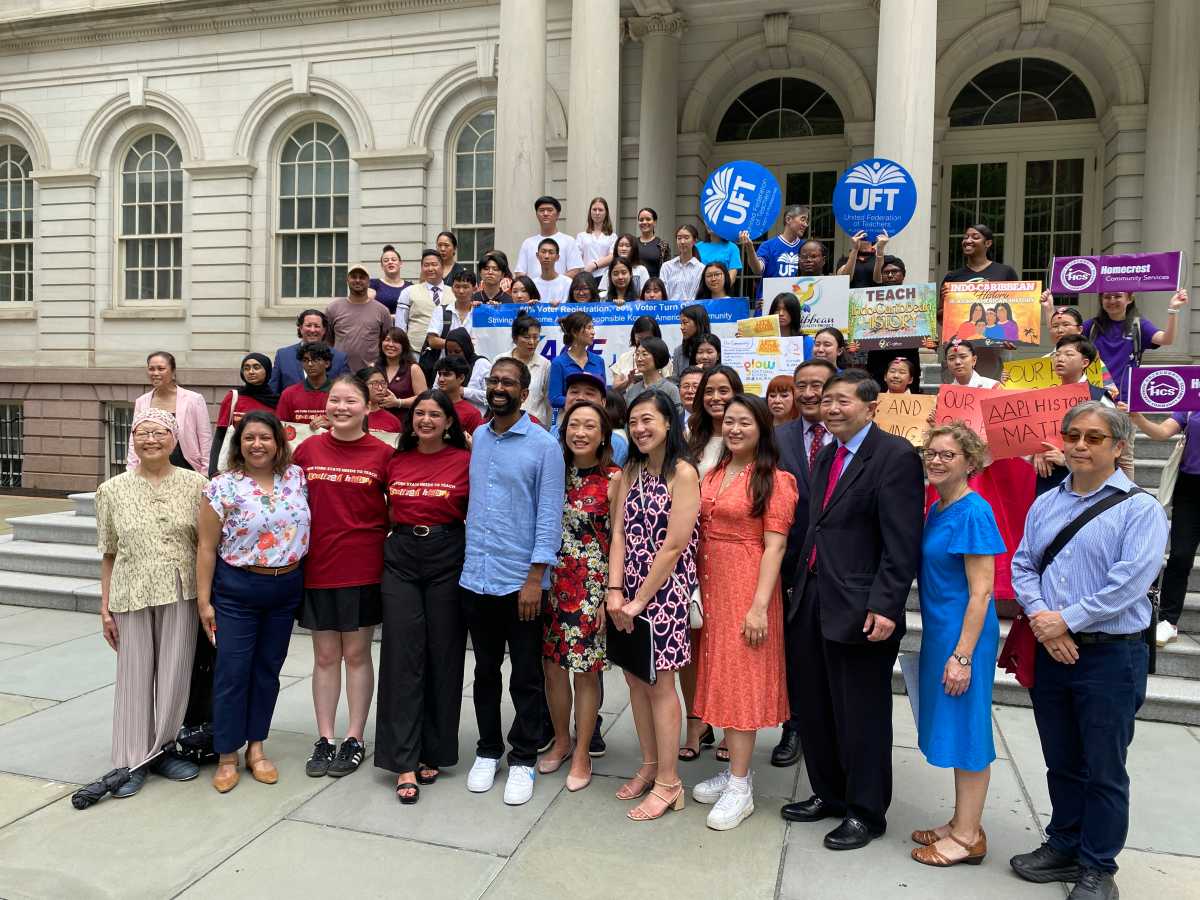By Sara G. Levin
Janice Sands, director of Pen and Brush
Janice Sands is a firm believer in the equal rights of artists. “Given that more women than men are graduating from arts school, [it’s a shame] they’re not represented in art shows, galleries, auctions,” said the energetic executive director of Pen and Brush, a historic all-female arts club on East Tenth Street. “Most of the gallery owners, as a percentage, are women. Most of the work that they are showing is men.”
The group’s mission is as pertinent today as when it was when it was founded by pioneering feminists in 1894, and Sands is working hard to make sure the foundation is still as relevant. Ever since she was hired as Pen and Brush’s first executive director in 1998, the experienced arts manager has been slowly reshaping the club, which was founded in response to the men-only policy at the neighboring Salmagundi Art Club.
“[Pen and Brush] had among its early members women who were at the forefront of cultural, social and even in those days political activity in New York,” said Sands, a stylish woman with spiky brown hair. “They were an interesting mix of working, professional artists who couldn’t get into any other professional arts organizations because they were female, wealthy women who wanted to support art, and people who were generally active in reform of various kinds.”
Early members included first ladies Eleanor Roosevelt and Ellen Axson Wilson, Pulitzer Prize winner Pearl Buck and journalist Ida Tarbell. The permanent collection of Pen and Brush is not fully catalogued, but Sands estimates that there are 100-plus artworks and written materials, including letters from Roosevelt and Buck. Although today the organization is primarily made up of visual artists, it previously served an equally large group of writers.
However, Sands continued, once female artists became more accepted in the outside art world, including being accepted into Salmagundi, the support of Pen and Brush became cushy and insular. The security that its vociferous, active patrons built turned instead to insulation.
“There was a kind of isolation of what the organization was,” said Eleanor Campulli, a retired arts teacher and the group’s Chair. She was referring to the pre-1990s, when traditional portraits and landscapes were more prominent in group shows, and many women in the club came from similar cultural backgrounds. Campulli became more involved with the organization when she saw that its members were enthusiastic about breaking out of their cultural cocoon.
“The changes that I saw were changes of a greater willingness to be more accepting of different kinds of art than they had been in the past and different kinds of people— [all] ages, ethnicities.”
By expanding exhibitions to outside artists, collaborating with other female arts organizations, and rethinking advertising, Sands hopes to shed the antiquated cloak Pen and Brush once wore, and make it more serviceable to emerging artists.
The not-for-profit club began showing fully juried exhibitions for the first time this winter. Non-members were allowed to apply for exhibitions several years ago, but unlike members, their work had to be judged before it could be included. Now, Sands said, the prestige of being in a juried show has attracted more artists — and members — to participate.
Michiyo Fukushima, a painter in her early thirties who joined Pen and Brush two years ago, said she heard of the group’s history through a professor of hers at the National Academy School of Fine Arts.
“I started entering the juried shows to build up my resume,” Fukushima said. “If you don’t have opportunity to show it’s hard to just keep painting.”
Following each exhibition judged by art connoisseurs outside Pen and Brush, the group has received six or seven new members. Currently, there are 250-300 members who pay $250 a year for reduced exhibition entry fees, guarantees in some shows, workshops and lectures. In addition, more and more art is being sold during exhibitions, Sands said.
As a result of these juried shows, the average member’s age is getting younger, a main goal for the organization since many are over 60. Sands, who has worked previously with the Actors’ Fund of America and the Screen Actors Guild, says she wants to reach out to artists at the beginning stages of their career.
“It’s important to be seen and it’s important to get opinion from people,” Fukushima said, describing the benefits of exhibiting and receiving constructive criticism while developing as an artist. “That’s what I value.”
Although Sands has a part-time assistant, she has more than doubled Pen and Brush’s yearly events almost single-handedly. Last year, the house hosted about 70 exhibitions, readings, lectures, workshops or performances. The space, she said, has to be as productive as possible to provide “facilities for women to create art and display it to the public.” So in addition, renovations are being made to the building.
The bottom floor dining room of the group’s 1923 brownstone is being remodeled into a second gallery space, with track lighting and more wall space. The yard, draped in wisteria, will become a small three-season sculpture garden. But to be sure, the set of rusted servant bells that hang across the back door will remain the same, just like the kitchenette, small hints of the wealthy family who once lived there.
Visual art is prominently displayed throughout the club. During a recent show celebrating Women’s History Month, for instance, the pieces by members and non-members displayed a variety of styles. One of the more contemporary collages showed a woman’s face pieced together by cut-outs of magazine models. A slightly more traditional painting across the room was of a young woman standing before a window, like a Hopper nude.
Standing inside the gothic chapel behind Pen and Brush’s main gallery space, which is now used as a library, Sands eyes grew wide as she excitedly explained how the organization is currently cataloging their literary collection so researchers can access it through a new website.
“It is miraculous to me how much the organization does with a very limited budget and staff,” she added. “If we’re being incredibly optimistic, the website may launch next month.”
Pen and Brush also hosts contests for fiction writers and playwrights. Winners of last year’s playwright competition are now working with an Off-Broadway theater director so their work can be produced. Sands is also hoping that the group can soon publish a collection of fiction.
“That gets us back to a time in the organization’s history when at any point you could look at a newsletter and see five [members] who got their work published in a major magazine or a playwright who showed work in a playhouse…” Sands said. “That was routine here.” In a sense then, added Sands, moving forward for Pen and Brush will also mean a step back in time.






































